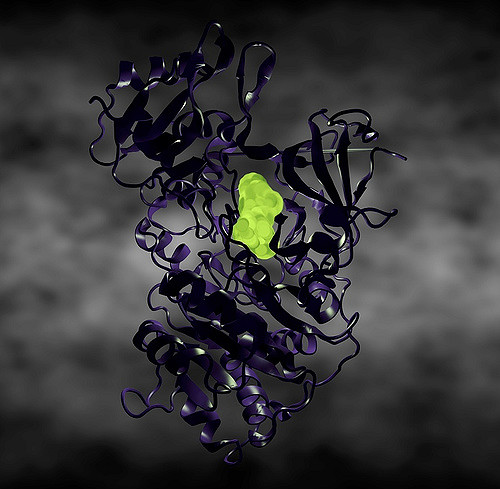Protein analysis and identification through mass spectrometry first requires a breakdown of each protein into their composite peptides. Once the protein has been broken down, the peptides can be separated through the use of a reverse phase column and the peptides and peptide fragments can be measured using a mass spectrometer.
The Protein Man

Recent Posts
Role of Proteases in Mass Spec Identification of Proteins
Topics: Mass Spectrometry
Adjuvants play an important role in the antibody production by acting as immunopotentiators. They augment immune response via different mechanisms depending upon the adjuvant such as ‘depot’ effect, antigen presentation, antigen targeting, immune activation or modulation and cell-mediated response. The goal of adjuvant for antibody production is that high affinity, high titer and high avidity (for polyclonal) antibodies are raised. Both humoral and cell mediated response are necessary to achieve efficient antibody production. There are hundreds of preparations for adjuvants described in literature depending upon specific needs of an investigator. Nevertheless, most commonly and widely used adjuvants for antibody productions are few as listed below.
Topics: Antibody Production
How to Check Western Transfer before using expensive antibodies
Immunodetection of proteins on a Western blot requires the use of expensive antibodies, but poor or incomplete transfer would result in wasting these antibodies. A Western transferred blot can be checked for success of protein transfer with a protein stain and therefore prevent wasting expensive antibodies. Various options for protein stains for Western blot are available, including, but not limited to, Ponceau S, Amido black 10B, Coomassie brilliant blue R250, India ink or colloidal gold. In addition to checking success and quality of Western transfer, staining blots is also used for semi-quantitative protein estimation. In addition, checking the blot with a stain gives a rough idea to a researcher that the desired protein is present (based on size, mobility etc) and whether to go for immunodetection especially when expensive and limiting amounts of antibodies are available.
Topics: Western Blotting
How to visualize proteins after electrophoresis
How to visualize proteins after electrophoresis
In-gel visualization of proteins separated by SDS-PAGE or by 2-D gel electrophoresis is achieved by staining gels with dye, metals ions or fluorescent stains. Different staining method are preferred depending upon broad range binding of stain to proteins, the sensitivity to detect low abundant proteins and downstream application desired for a separated protein like mass spectrometry. Sometimes two staining methods are carried out as single staining method cannot achieve everything desired by a researcher. Various staining method for in-gel visualization of proteins are as follows.Coomassie Brilliant Blue staining
The Coomassie dyes R-250 and G-250 bind to proteins stoichiometrically through their sulfonic acid groups. The interactions between dye and protein are Van der Waals and ionic. The sulfonic acid groups interact with positive amine groups. Therefore coomassie dye binds to wide range of proteins. The most commonly used dye R-250 can detect protein as low as 0.1 µg. Coomassie Brilliant Blue involves staining and destaining step as the gel also turns blue. Coomassie Brilliant blue is compatible with mass spectrometry analysis. Though widely used for staining gels to view proteins, its not a method of choice if higher sensitivity is desired. For analytical purposes other methods like silver staining and fluorescent staining are preferred over classical Coomassie Brilliant Blue staining.Colloidal Coomassie G-250 staining
In colloidal Coomassie staining G-250 dye is used instead of R-250 due to its colloidal properties. G-250 forms colloidal particles in high alcoholic solutions containing strong acids and high concentration of salts 1, 2. Formation of colloidal G-250 particles reduces free dye in solution and thus the dye does not penetrate and stain gel. This step enhances the sensitivity of staining proteins and removes background staining of gels. With colloidal Coomassie staining detection limit of 1-10 ng of protein in gel is achieved 3.Silver staining
It offers high sensitivity of less than 1 ng of protein 4. The silver ions bind to the protein and are reduced further with a developing solution to give an image of protein bands. Silver staining involves various steps like protein fixation, sensitization, silver impregnation and image development. Based on solution used there are two methods of silver staining: silver nitrate and silver-ammonia complex method. Silver staining protocols compatible with downstream application like mass spectrometry are available. The downside of silver staining is that it has limited dynamic range and thus do not interact uniformly with all proteins. In addition it involves use of hazardous chemicals.Fluorescent staining
Fluorescent staining uniformly stains protein, is rapid and offers sensitivity equal to that attained by silver staining method. It involves no destaining step and is compatible with mass spectrometry and microsequencing. Commercially fluorescent stains are available to stain 1D or 2D gels to visualize bands.Stain free detection of proteins in gel
In stain free method for visualizing proteins, 2, 2, 2-Trichloroethnaol is added to the polyacrylamide solution before casting a gel 5. The principle behind stain free method is that the tryptophan amino acids in protein undergo an ultraviolet light-induced reaction with trihalocompounds to produce fluorescence in visible range (300 nm). This method is fast as one can see bands on transilluminator within 5 minutes and it avoids use of stains.References
1. Neuhoff, V. et al (1988). Electrophoresis 9, 255-2622. Candiano, G. et al (2004). Electrophoresis 25, 1327-1333
3. Kang, D. et al (2002). Bull. Korean Chem. Soc. 11, 1511-1512
4. Chevallet, M. et al (2006). Nat Protoc.1(4): 1852-1858
5. Ladner, C. L. et al (2004). Anal Biochem. 2004 Mar 1, 326(1):13-20
Topics: Protein Detection







